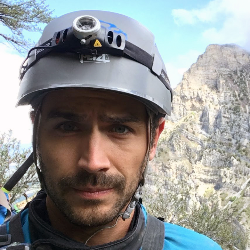Climate and ecology of the palaeo-Agulhas Plain from stable carbon and oxygen isotopes in bovid tooth enamel from Nelson Bay Cave, South Africa
 Authors:
Authors:
Judith Sealy, Navashni Naidoo, Vincent J Hare, Simone Brunton, J Tyler Faith
Abstract:
We measured δ13Cenamel and δ18Oenamel in 213 archaeological bovid teeth from Nelson Bay Cave (NBC), spanning the last 22 ka. We also recorded dental mesowear (occlusal relief [high versus low] and cusp shape [sharp, round, or blunt]) of all maxillary first and second molars from NBC. We use these values to explore glacial/interglacial shifts in bovid palaeoecology and to reconstruct aspects of the climate and environment of the Palaeo-Agulhas Plain. Our results indicate that at the time of the Last Glacial Maximum (LGM), there was a significantly greater proportion of C3 (winter-rainfall) grasses, although some C4 (summer rainfall) varieties were present. This conclusion is strengthened by correction for lower pCO2 at the LGM, leading to reduced carbon isotope fractionation in C3 photosynthesis. Terminal Pleistocene and Holocene grazers show a stronger C4 signal. Our findings are consistent with an eastwards extension of winter rainfall at the LGM, as proposed by some previous researchers. Beyond the broad distinction between browsers and grazers, δ13C values reflect species-specific dietary preferences. δ18O is more positive in browsers than grazers, probably due to their deriving a significant proportion of their water intake from evaporatively enriched leaf water. δ18O values do not show significant changes through time. The location of Nelson Bay Cave on the present-day interface between temperate and tropical weather systems means that this area is sensitive to past shifts in the relative importance of these systems. These findings therefore contribute to the reconstruction of past Southern Hemisphere climate dynamics on a glacial/interglacial time scale.
This publication can be viewed here
